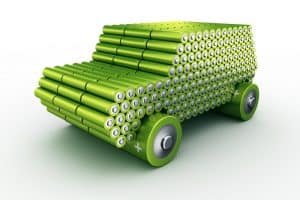
As more transport goes electric and more homes become self-sufficient, the need for longer-lasting, denser batteries will become ever greater.
Researchers at the Argonne National Laboratory have built a machine learning model to speed up the process of better battery development. In a paper, published in the August 27 issue of MRS Communications, the team describes the algorithm’s early performance and its capabilities.
Prior to the machine learning model, the researchers had been using a model called G4MP2. It’s an intensive model that uses a lot of computational power, and while highly accurate, would take years to scan all of the 166 billion larger molecules that are potential electrolyte candidates.
SEE ALSO: Case Study: Chuck the Robot Meets the Internet of Things
The new machine learning model is a compromise, reducing the accuracy somewhat for quicker results. “We believe that machine learning represents a way to get a molecular picture that is nearly as precise at a fraction of the computational cost,” said Ian Foster, Argonne Data Science and Learning division director.
Using the G4MP2 model as a guideline, the researchers hope to make the machine learning model more accurate over time. In the future, the new model may be able to mimic many of the properties of G4MP2, while keeping overhead costs to a minimum.
“This whole project is designed to give us the biggest picture possible of battery electrolyte candidates,” said Argonne chemist Rajeev Assary. “If we are going to use a molecule for energy storage applications, we need to know properties like its stability, and we can use this machine learning to predict properties of bigger molecules more accurately.”
As more transport goes electric and more homes become self-sufficient, the need for longer-lasting, denser batteries will become ever greater. However, it is getting more difficult to improve current battery tech, leading many to look for breakthroughs or new formulas. That may be necessary, as current battery development poses massive environmental damage.



























